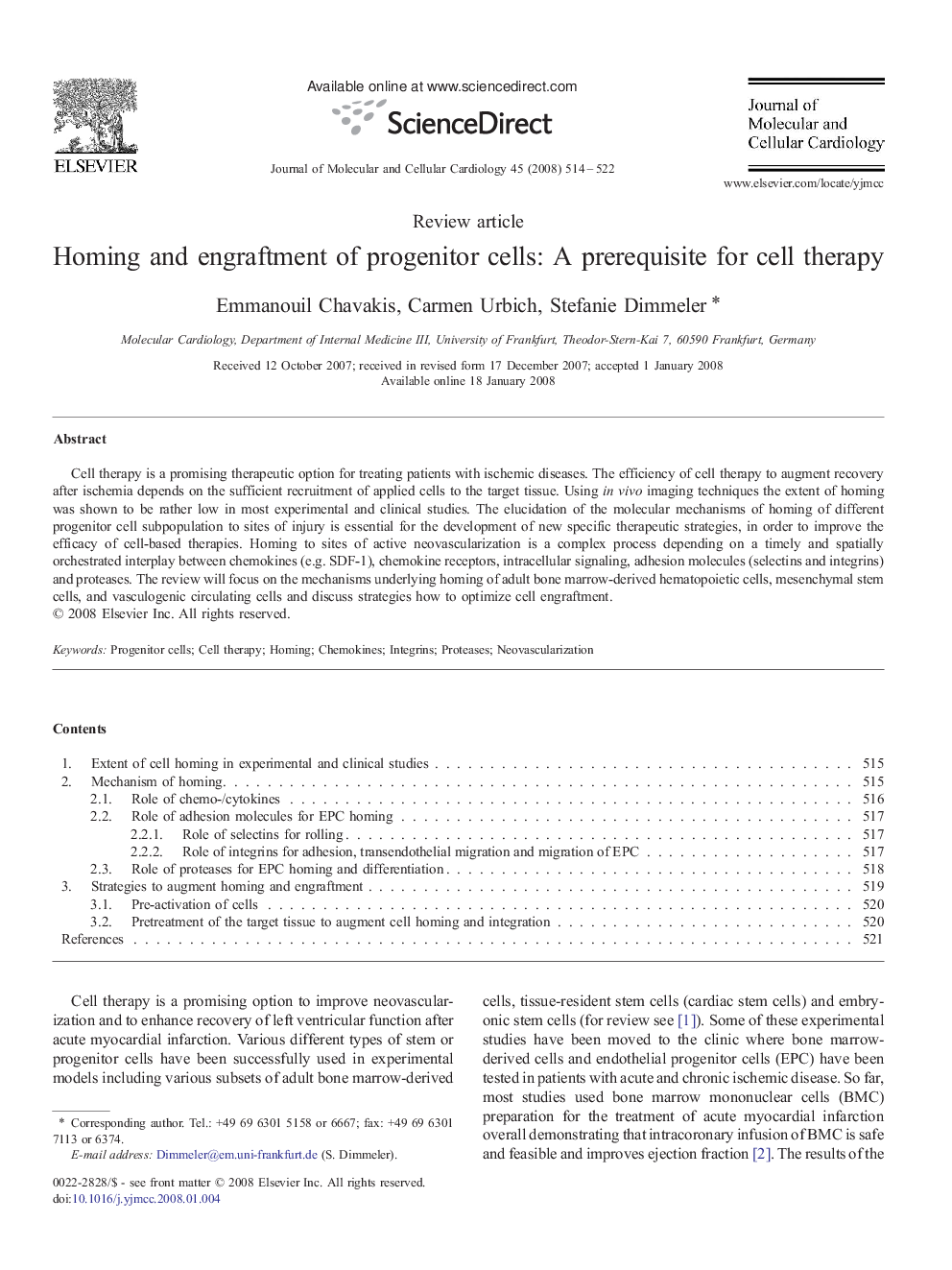| Article ID | Journal | Published Year | Pages | File Type |
|---|---|---|---|---|
| 2191519 | Journal of Molecular and Cellular Cardiology | 2008 | 9 Pages |
Cell therapy is a promising therapeutic option for treating patients with ischemic diseases. The efficiency of cell therapy to augment recovery after ischemia depends on the sufficient recruitment of applied cells to the target tissue. Using in vivo imaging techniques the extent of homing was shown to be rather low in most experimental and clinical studies. The elucidation of the molecular mechanisms of homing of different progenitor cell subpopulation to sites of injury is essential for the development of new specific therapeutic strategies, in order to improve the efficacy of cell-based therapies. Homing to sites of active neovascularization is a complex process depending on a timely and spatially orchestrated interplay between chemokines (e.g. SDF-1), chemokine receptors, intracellular signaling, adhesion molecules (selectins and integrins) and proteases. The review will focus on the mechanisms underlying homing of adult bone marrow-derived hematopoietic cells, mesenchymal stem cells, and vasculogenic circulating cells and discuss strategies how to optimize cell engraftment.
